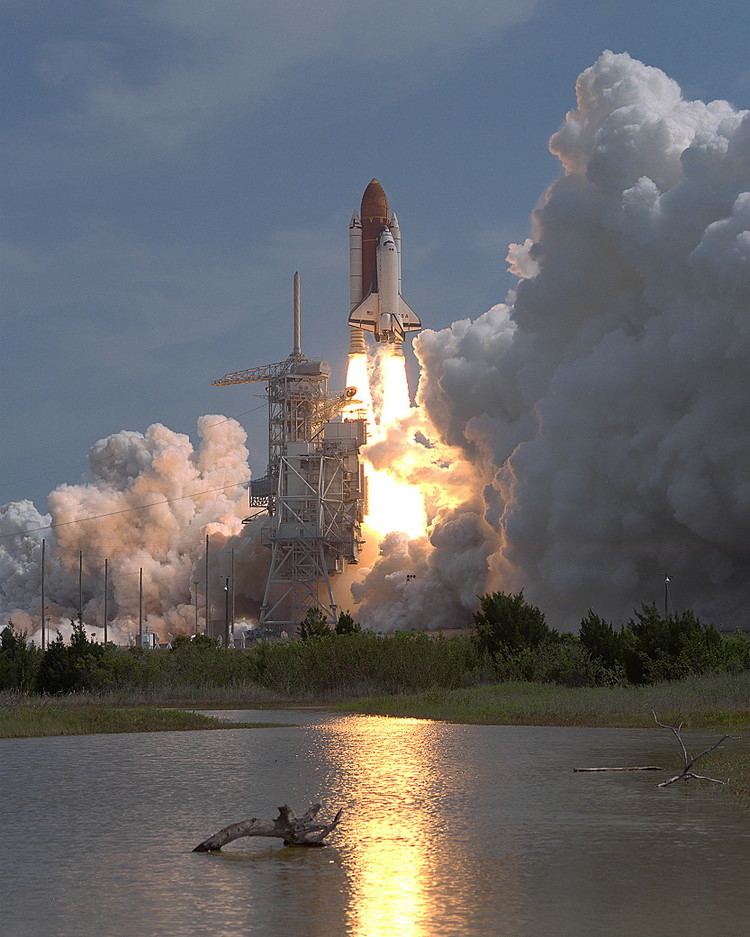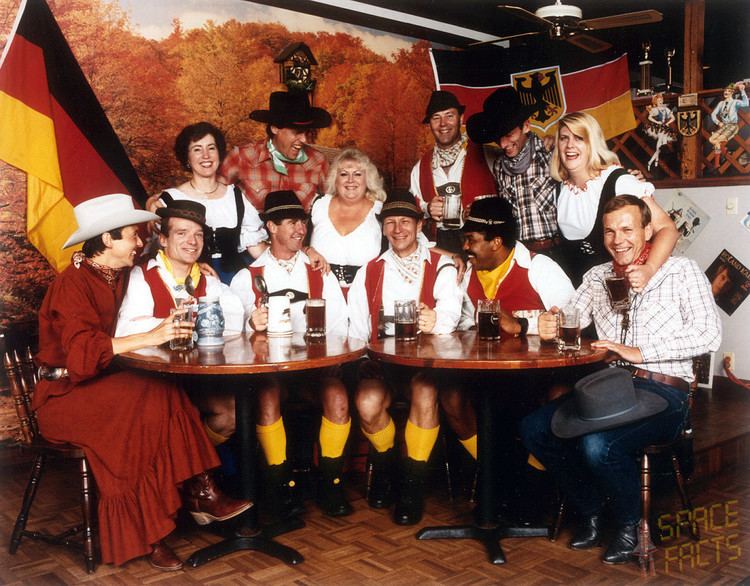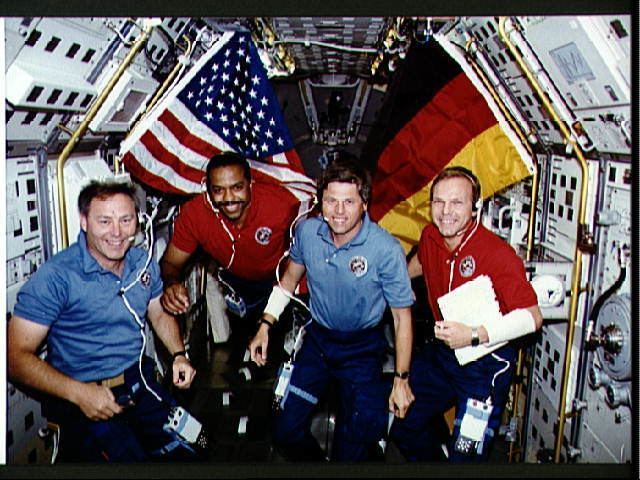Mission type Research SATCAT no. 22640 Period 1.5 hours Dates 26 Apr 1993 – 6 May 1993 Landing date 6 May 1993 | COSPAR ID 1993-027A Orbits completed 160 Apogee 312,000 m Launch date 26 April 1993 | |
 | ||
Mission duration 9 days, 23 hours, 39 minutes, 59 seconds Distance travelled 6,701,603 kilometers (4,164,183 mi) Members | ||
Sts 55 columbia april 26 1993
STS-55 (Space Transportation System 55), or D-2 was the 55th overall flight of the US Space Shuttle and the 14th flight of Shuttle Columbia. This flight was a multinational Spacelab flight involving 88 experiments from eleven different nations. The experiments ranged from biology sciences to simple earth observations.
Contents
- Sts 55 columbia april 26 1993
- Space shuttle flight 55 sts 55 post flight presentation
- Mission highlights
- Launch
- References

Space shuttle flight 55 sts 55 post flight presentation
Mission highlights

Columbia carried to orbit the second reusable German Spacelab on the STS-55 mission and demonstrated the shuttle's ability for international cooperation, exploration, and scientific research in space. The Spacelab Module and an exterior experiment support structure contained in Columbia’s payload bay comprised the Spacelab D-2 payload. (The first German Spacelab flight, D-1, flew Shuttle mission 61-A in October 1985.) The U.S. and Germany gained valuable experience for future space station operations.

The D-2 mission, as it was commonly called, augmented the German microgravity research program started by the D-1 mission. The German Aerospace Research Establishment (DLR) had been tasked by the German Space Agency (DARA) to conduct the second mission. DLR, NASA, the European Space Agency (ESA), and agencies in France and Japan contributed to D-2's scientific program. Eleven nations participated in the experiments. Of the 88 experiments conducted on the D-2 mission, four were sponsored by NASA.

The crew worked in two shifts around-the-clock to complete investigations into the areas of fluid physics, materials sciences, life sciences, biological sciences, technology, Earth observations, atmospheric physics, and astronomy. Many of the experiments advanced the research of the D-1 mission by conducting similar tests, using upgraded processing hardware, or implementing methods that took full advantage of the technical advancements since 1985. The D-2 mission also contained several new experiments which were not previously flown on the D-1 mission.

The mission surpassed the 365th day in space for the Space Shuttle fleet and the 100th day of flight time in space for Columbia, the fleet's oldest Orbiter, on its fourteenth flight.

D-2 marked the first tele-robotic capture of a free floating object by flight controllers in Germany. The crew conducted the first intravenous saline solution injection in space as part of an experiment to study the human body's response to direct fluid replacement as a countermeasure for amounts lost during space flight. They also successfully completed an in-flight maintenance procedure for collection of orbiter waste water, which allowed the mission to continue.
STS-55 crewmembers participated in two amateur radio experiments, SAREX II from the United States and the German SAFEX. These experiments allowed students and amateur radio operators from around the world to talk directly with the Space Shuttle in orbit and participated in a SpaceMedicine conference with the Mayo Clinic.
Launch
Columbia was initially scheduled to launch in late February. However, this date slipped to early March due to concerns with the tip-seal retainers in the main engines' oxidizer turbopumps. All three turbopumps were replaced at the pad but later inspection revealed the retainers to be in good condition.
Further delays were caused by the burst of a hydraulic flex hose in the aft compartment during the Flight Readiness Test. The lines were removed and inspected and three replacements were installed.
The launch attempt on 22 March was aborted automatically at T-3 seconds when computers detected an incomplete ignition of the number three Space Shuttle Main Engine. The problem was traced to a leak in the liquid oxygen preburner check valve. All three SSMEs were replaced as a precaution.
Another launch attempt on 24 April was scrubbed due to a possible faulty reading with one of the inertial measurement units.
The final launch attempt was successful with liftoff at 10:50 am EDT on 26 April 1993.
